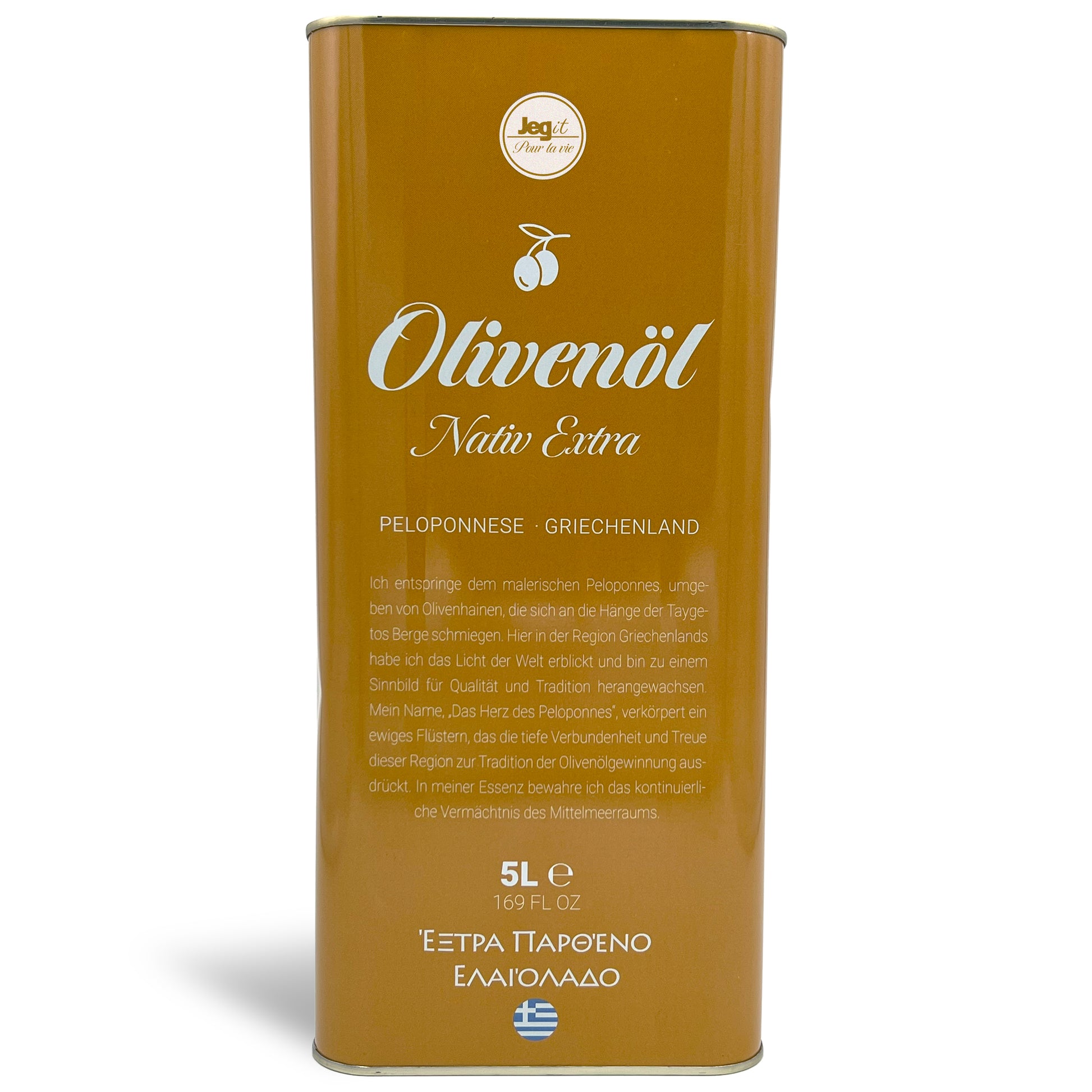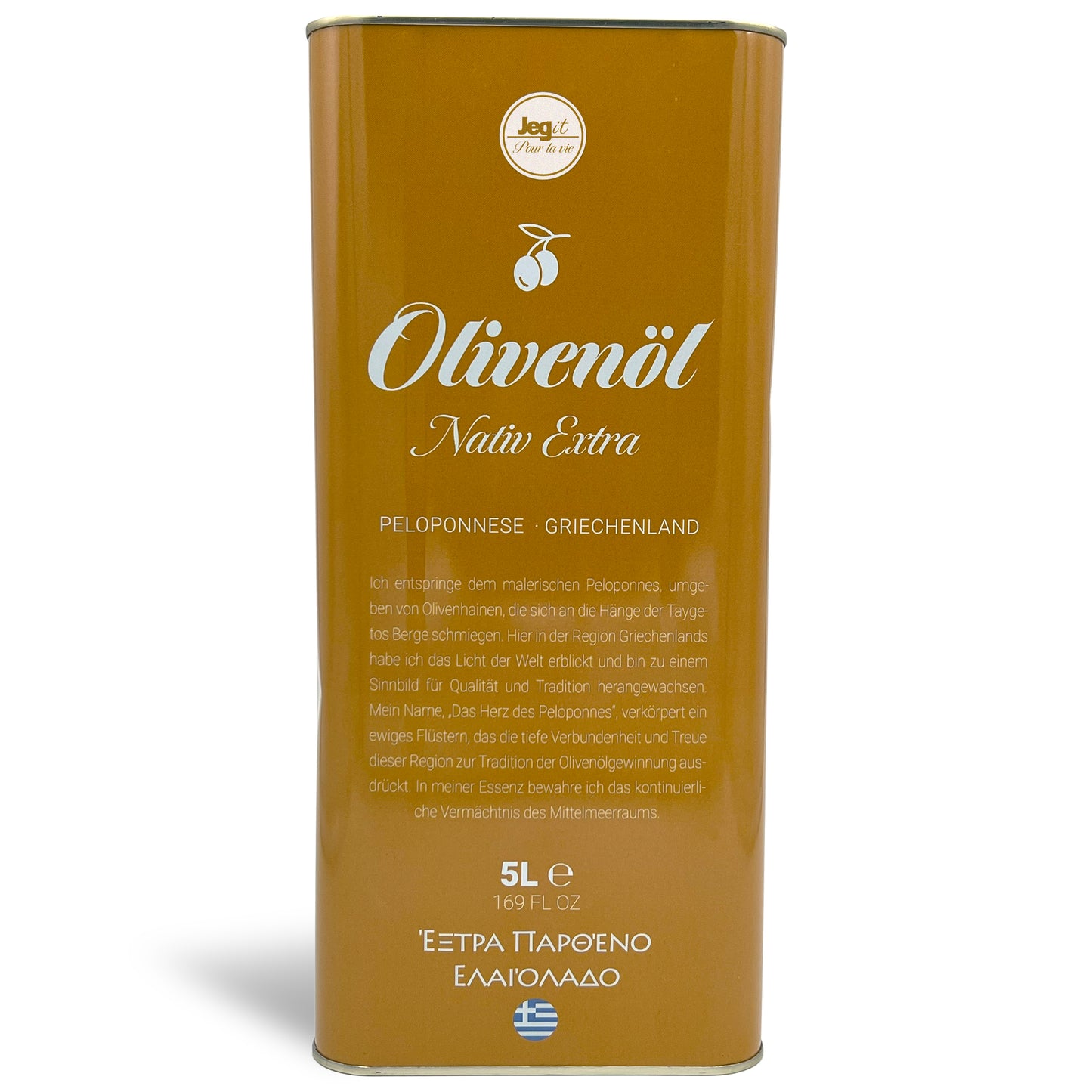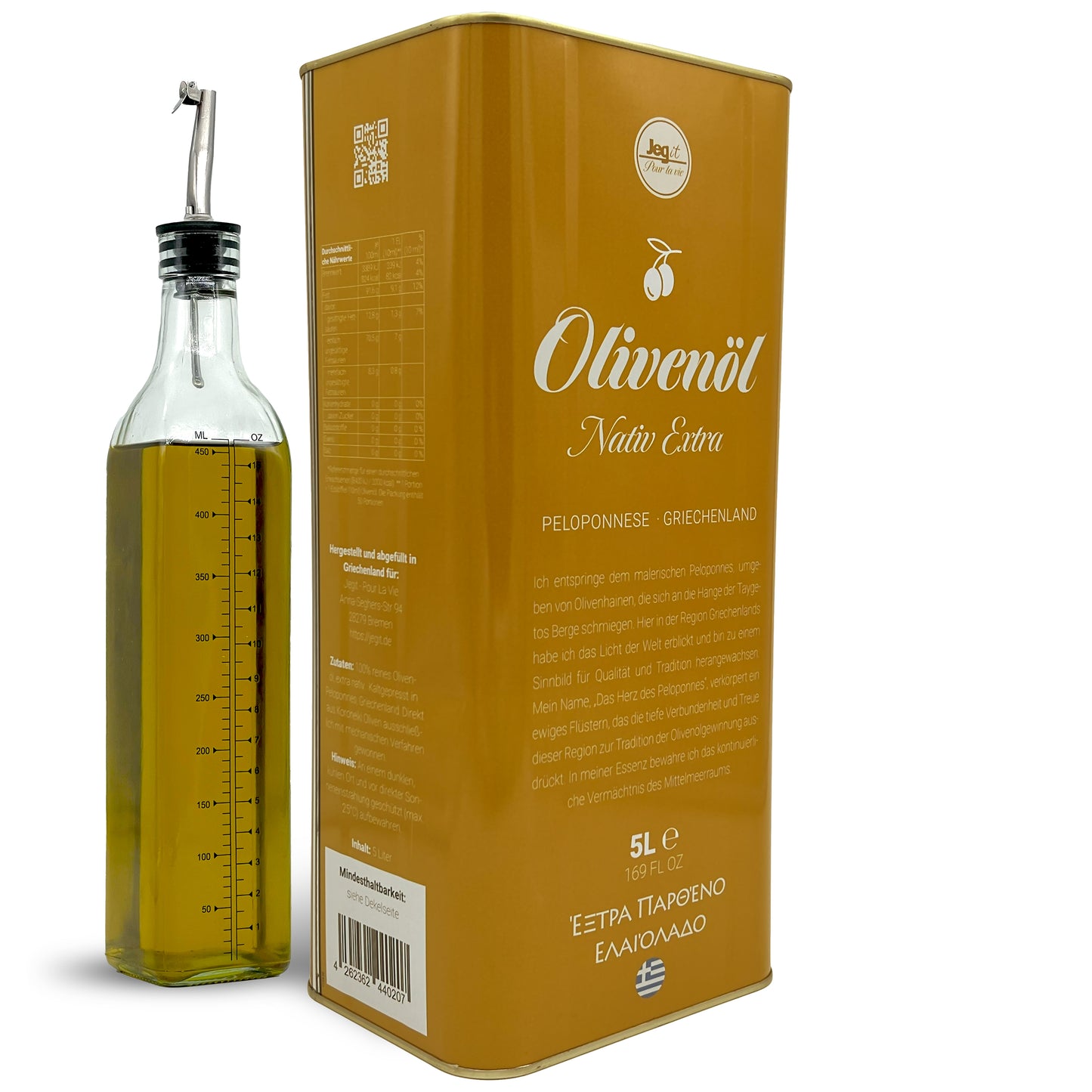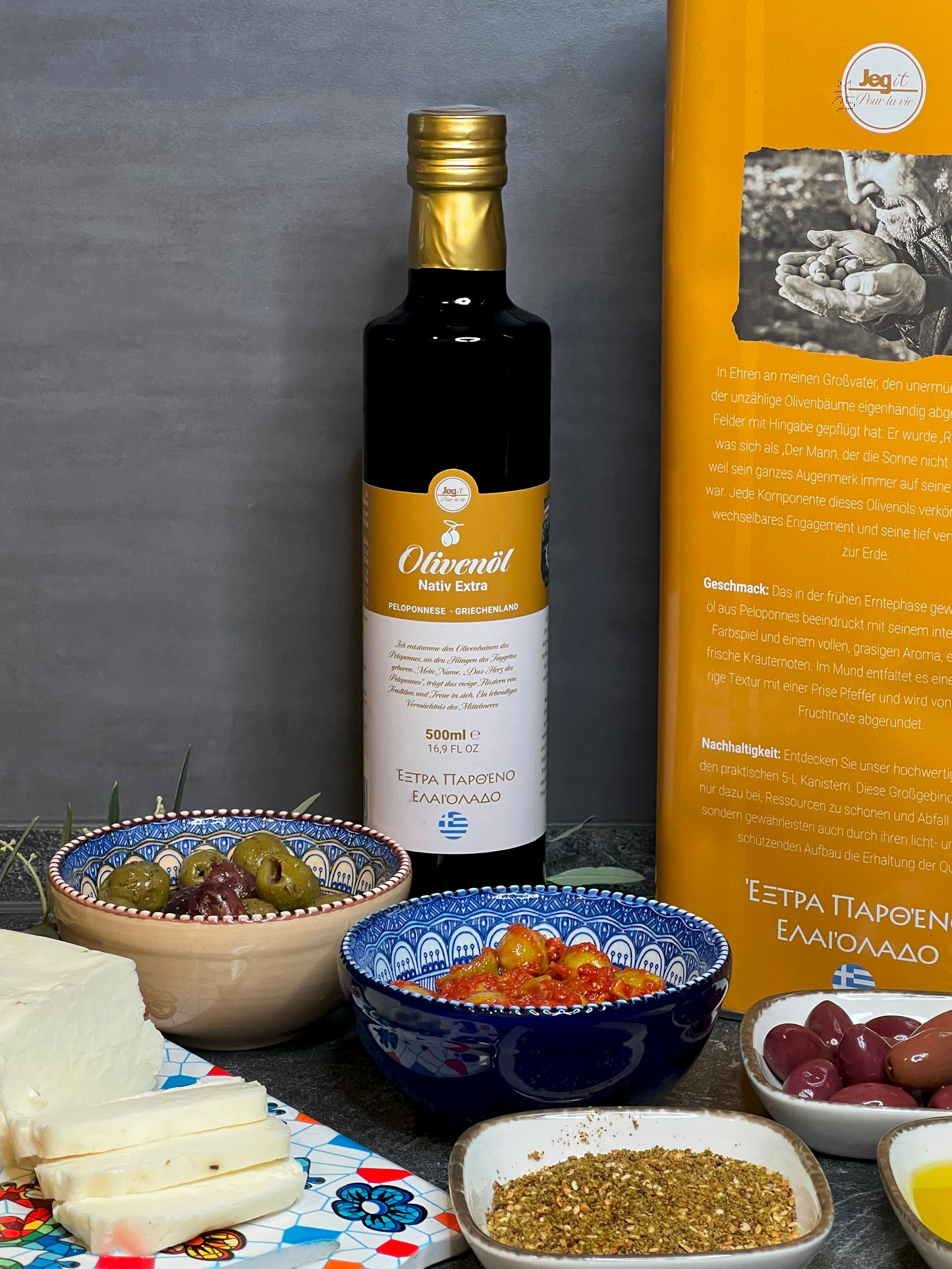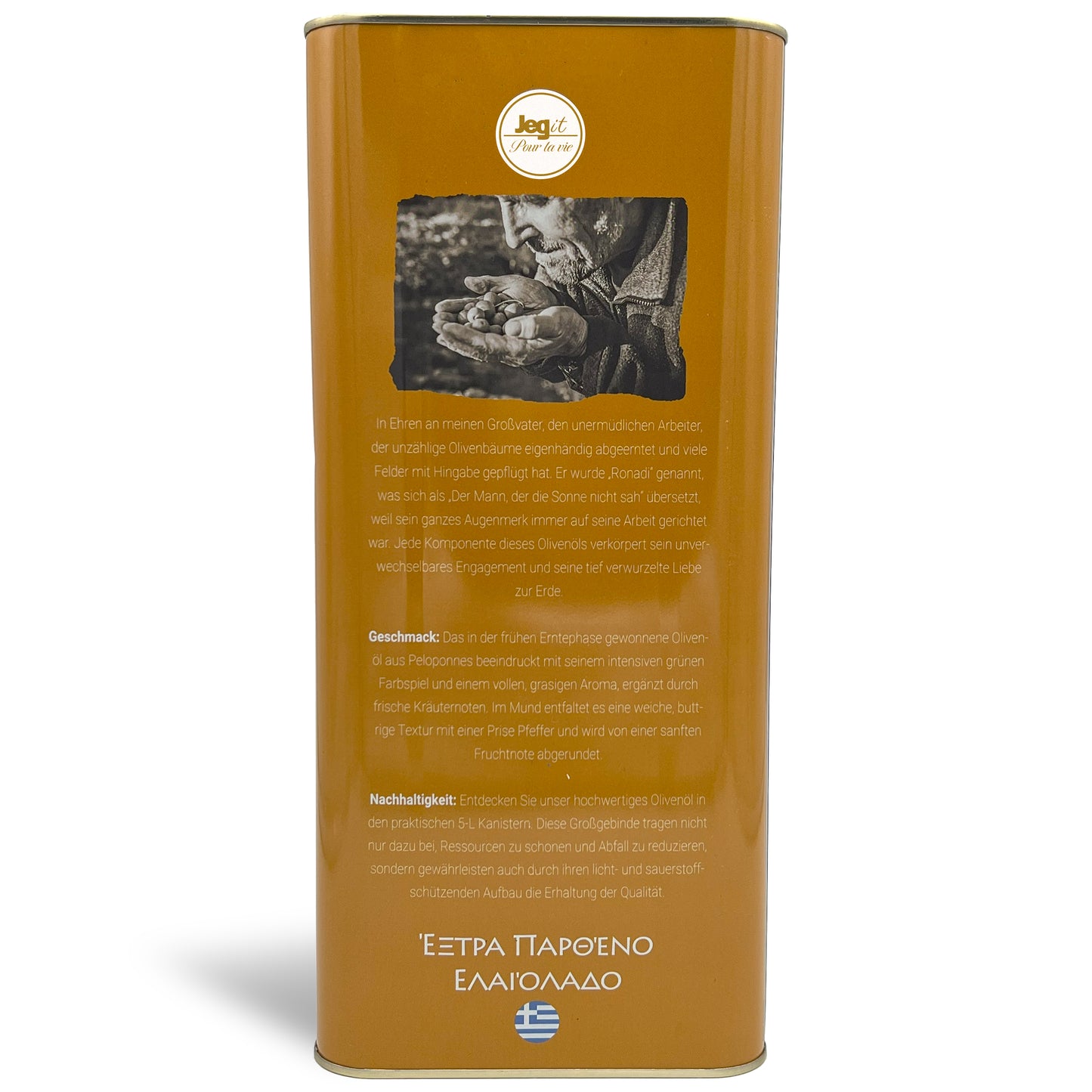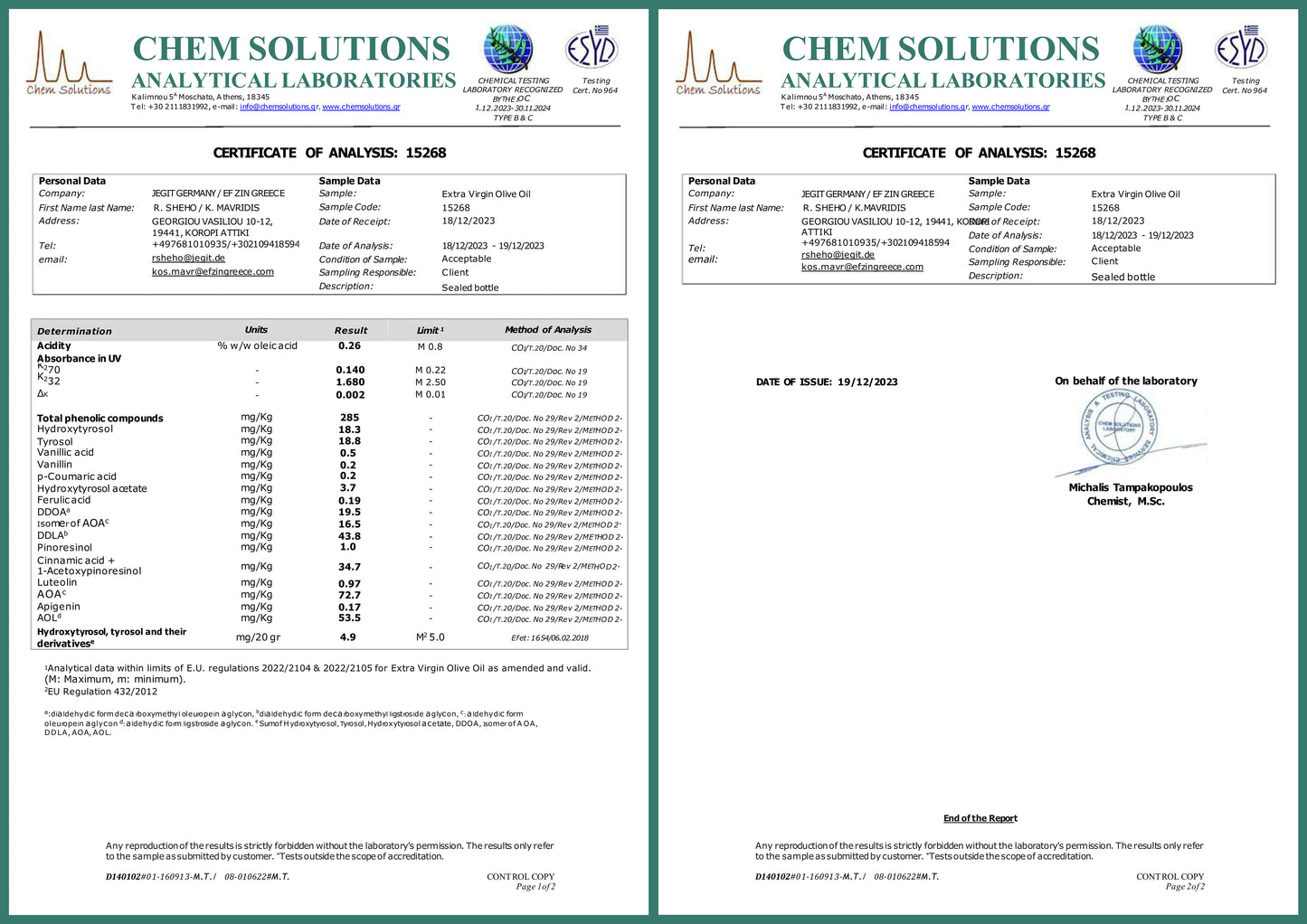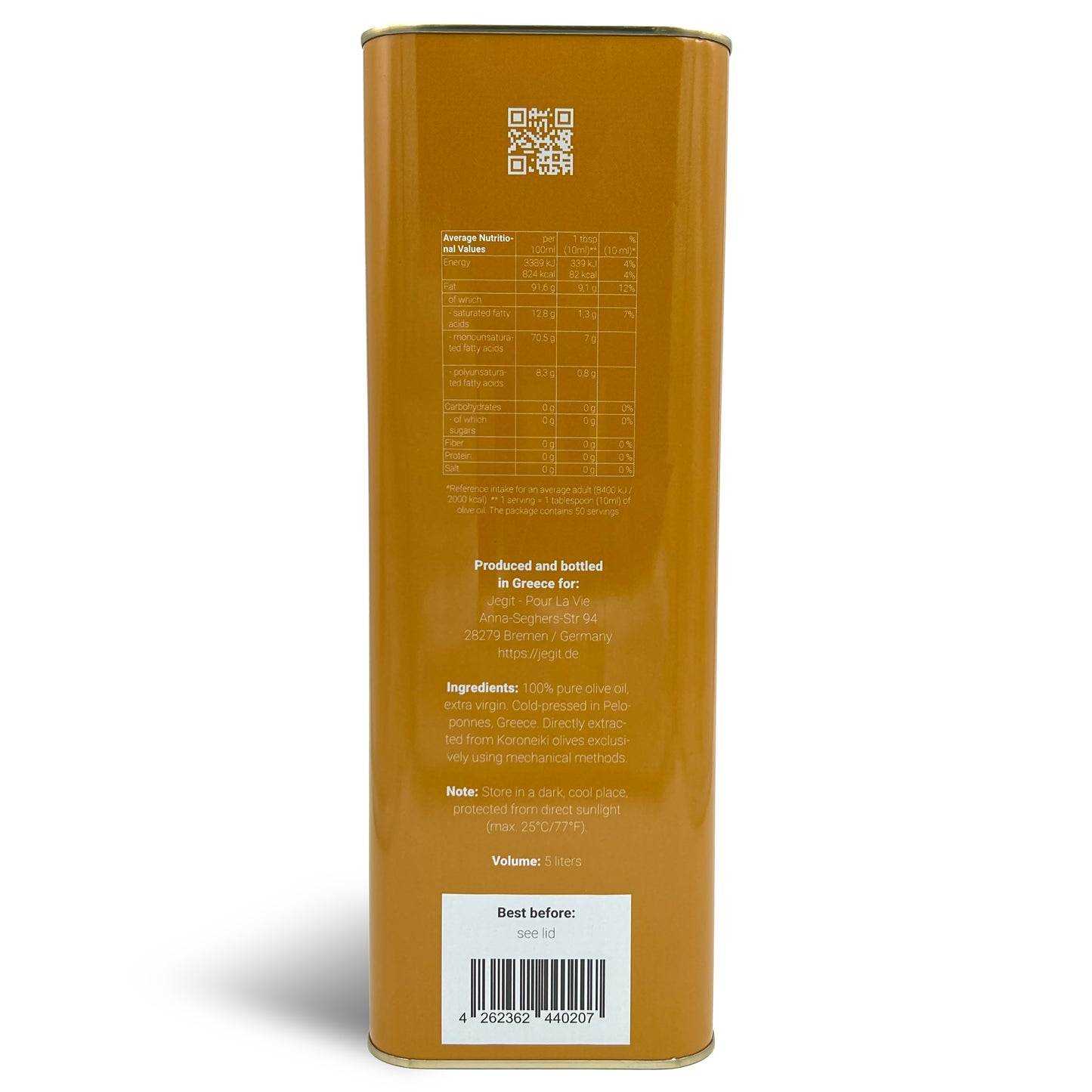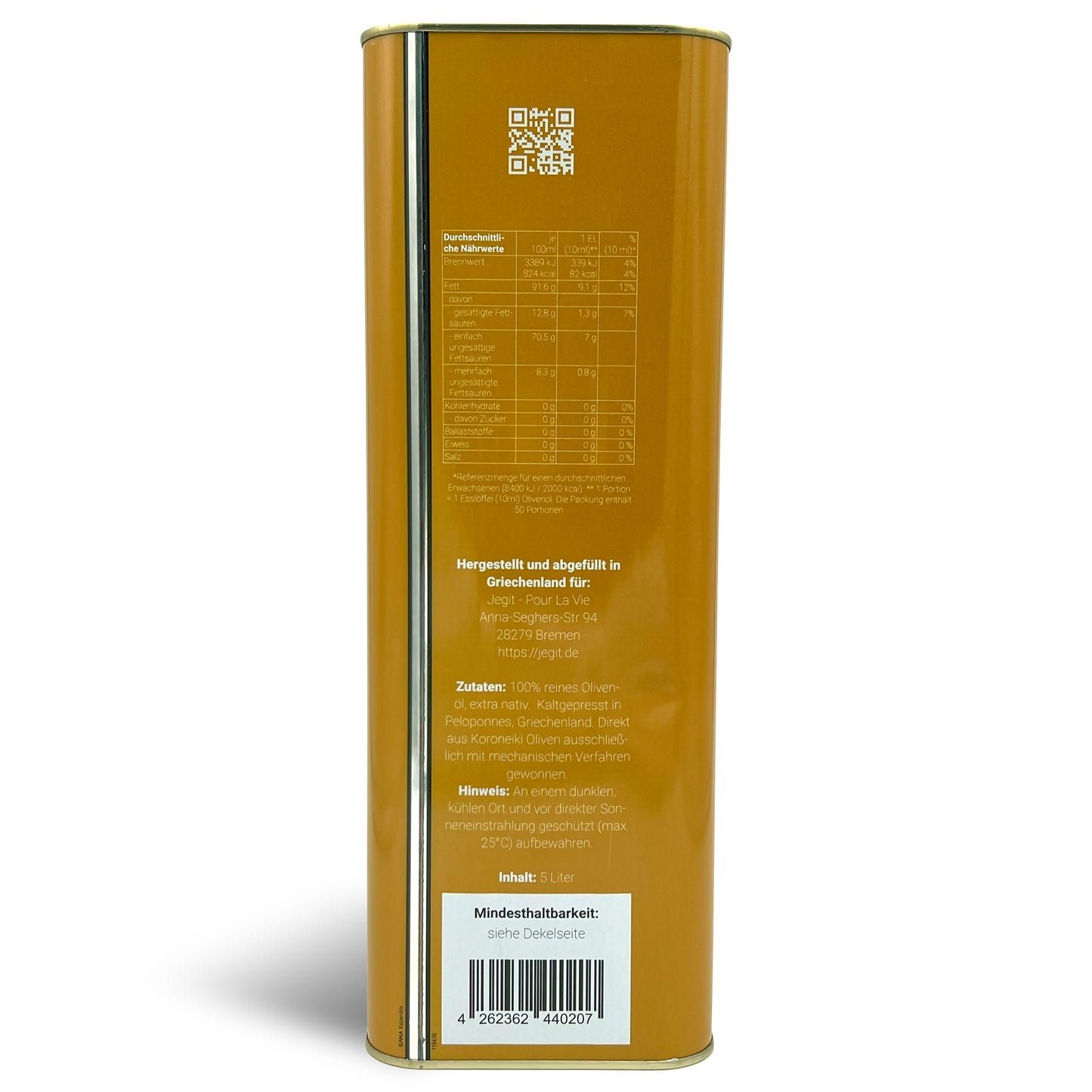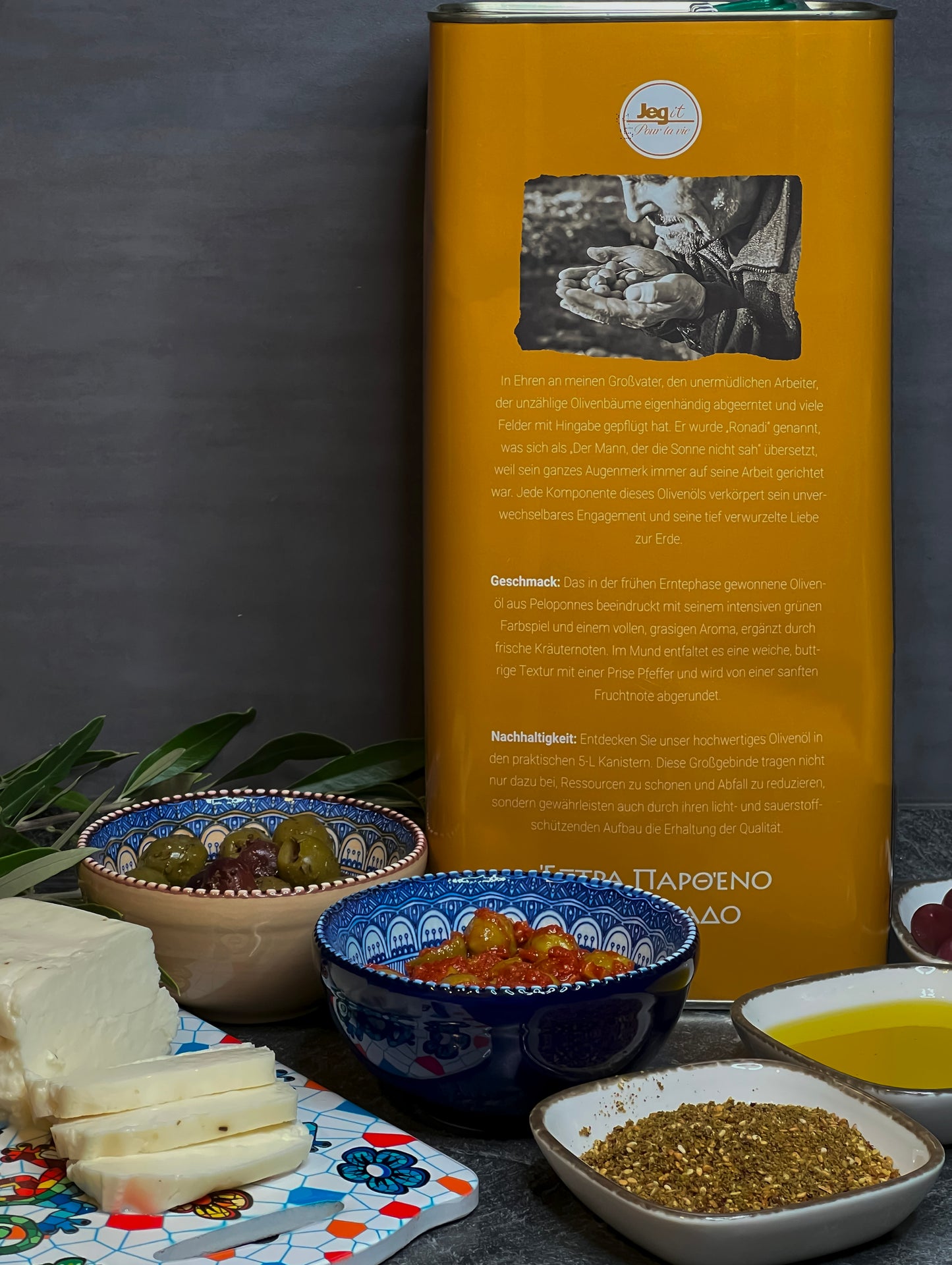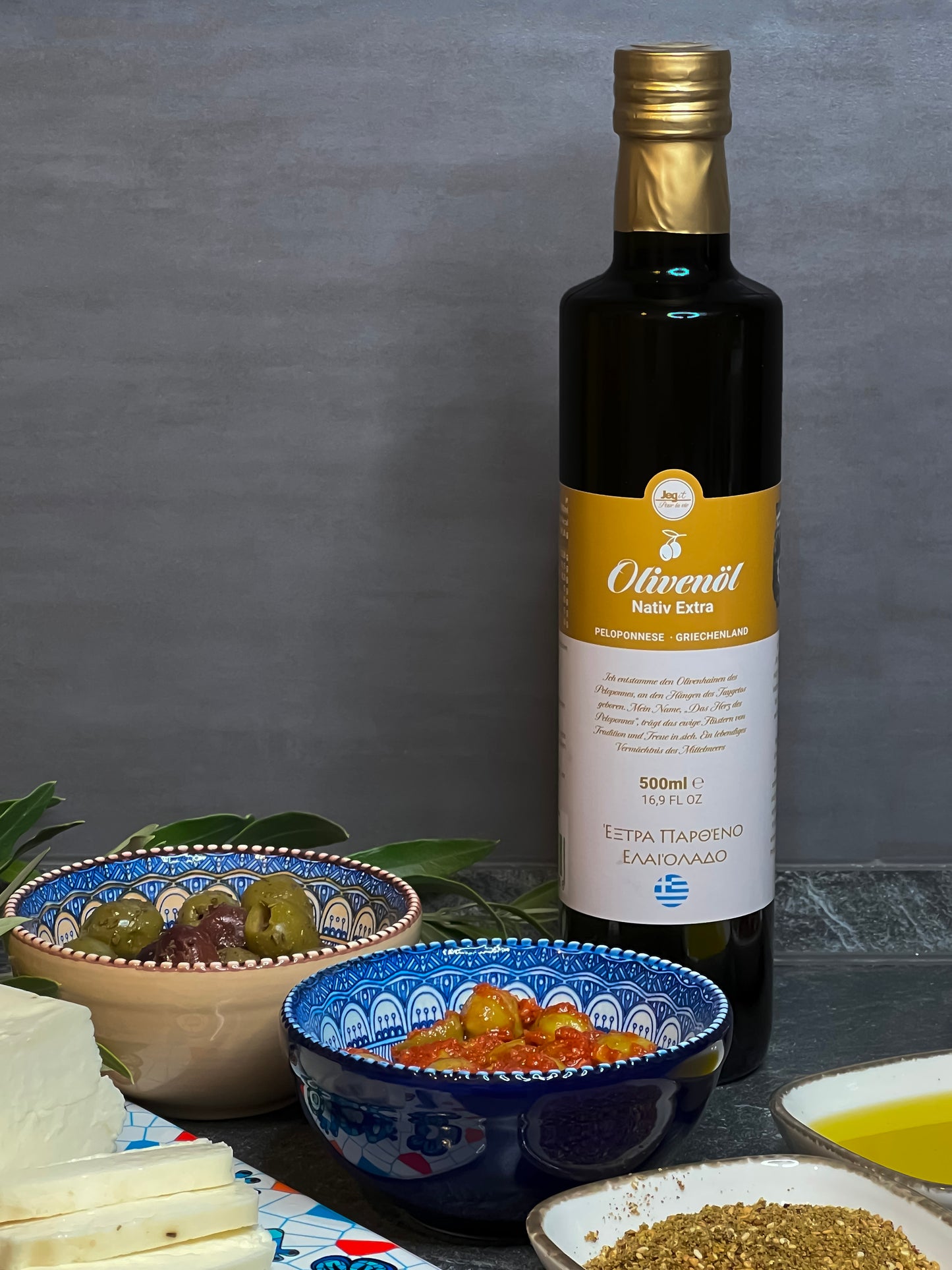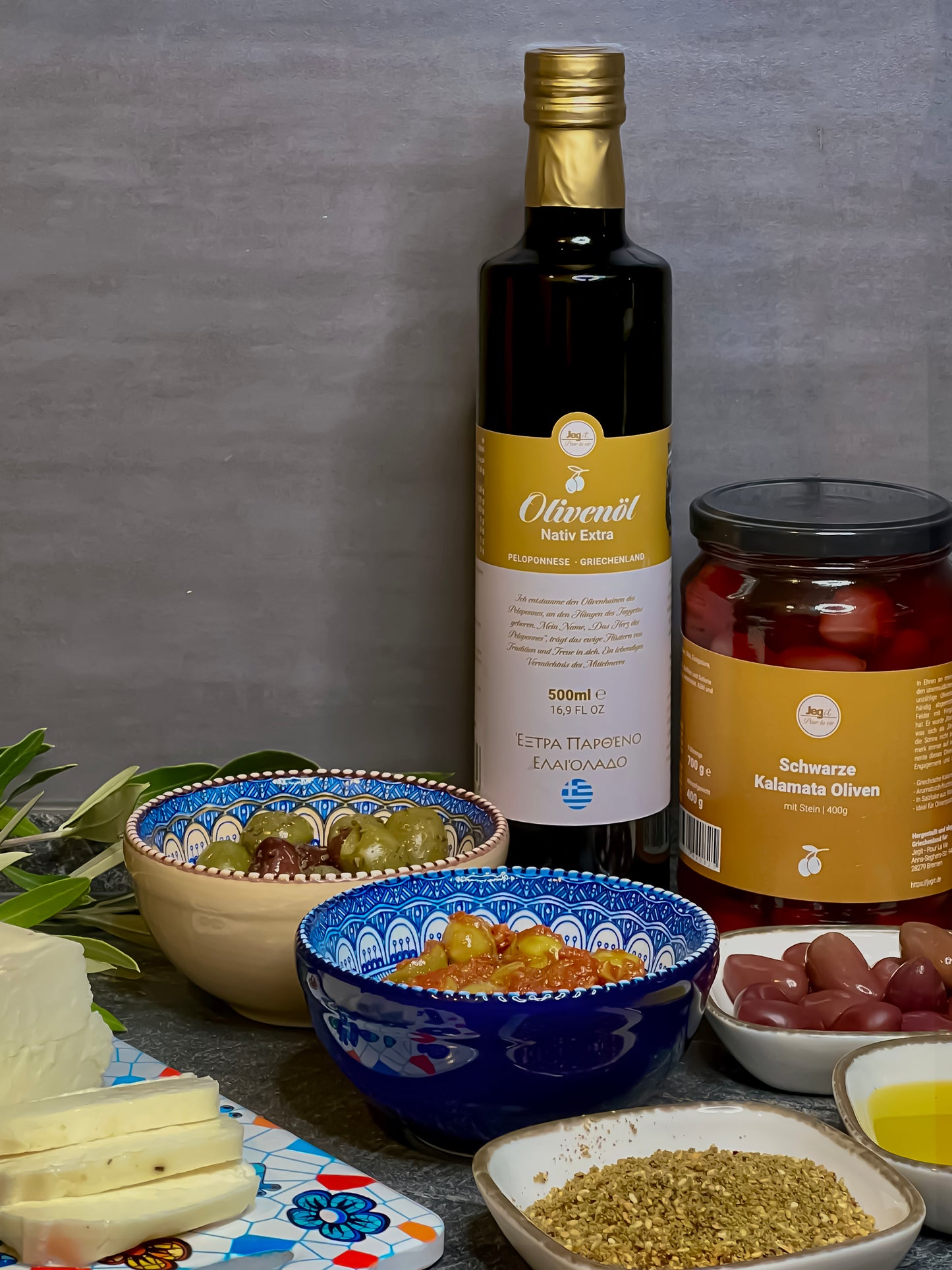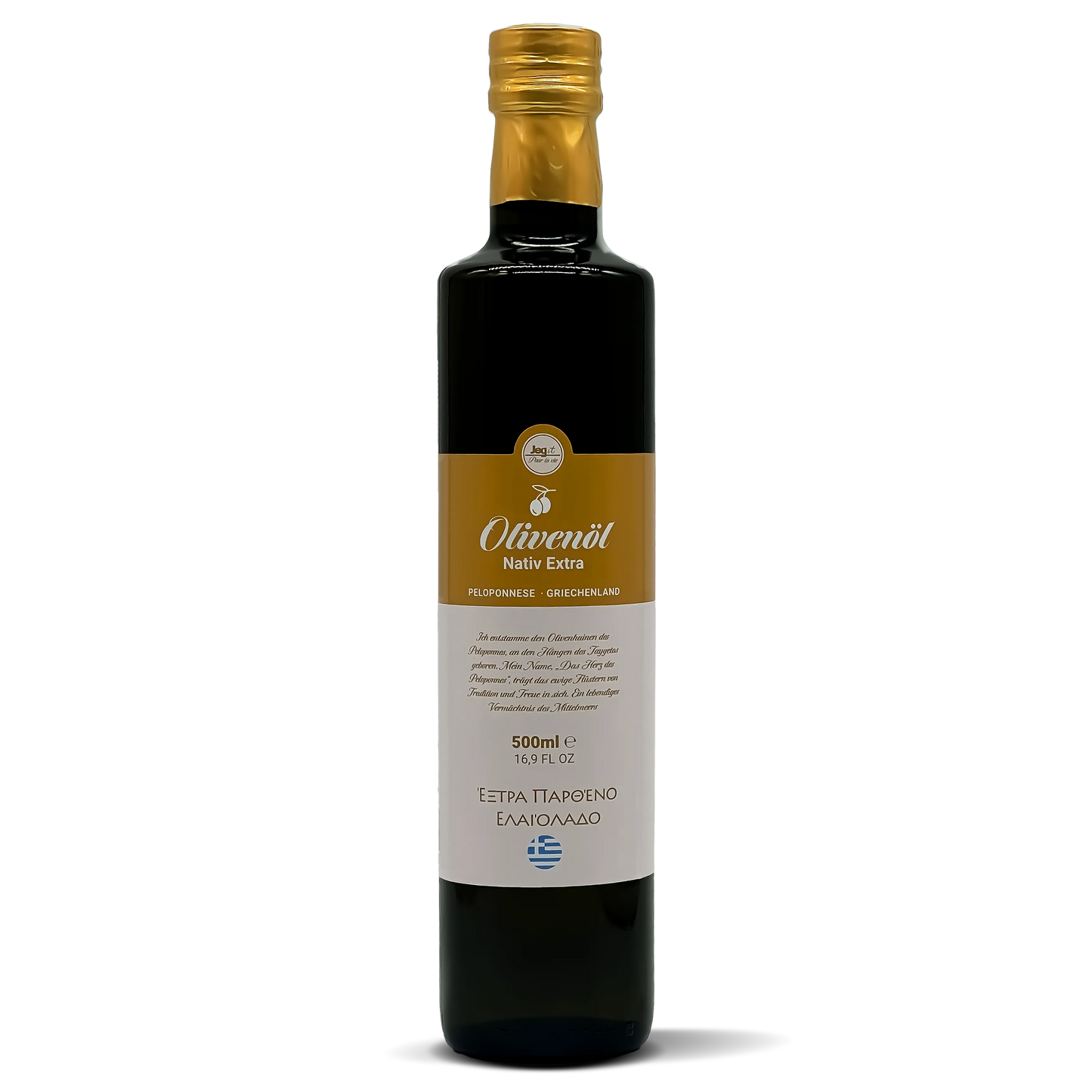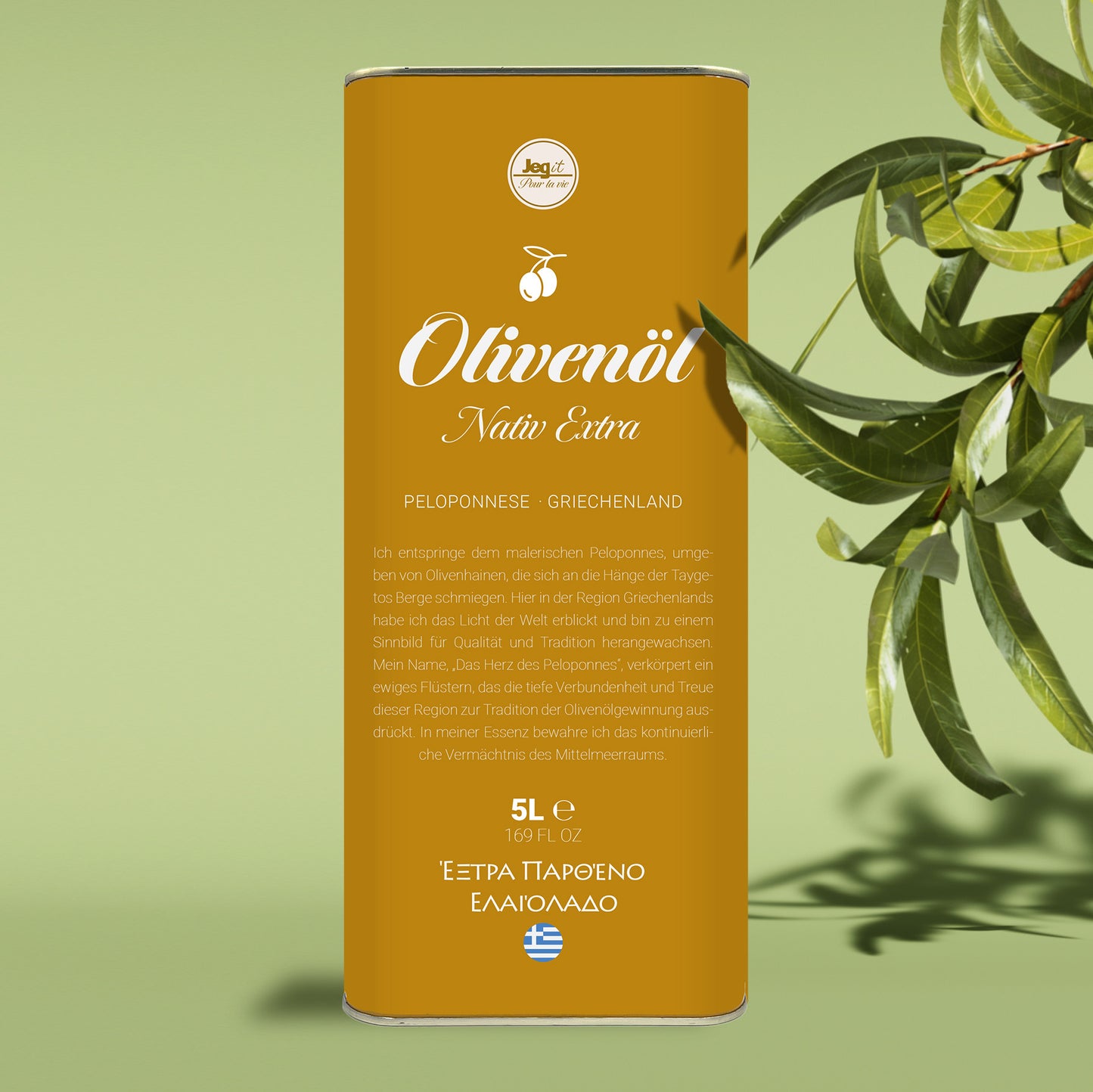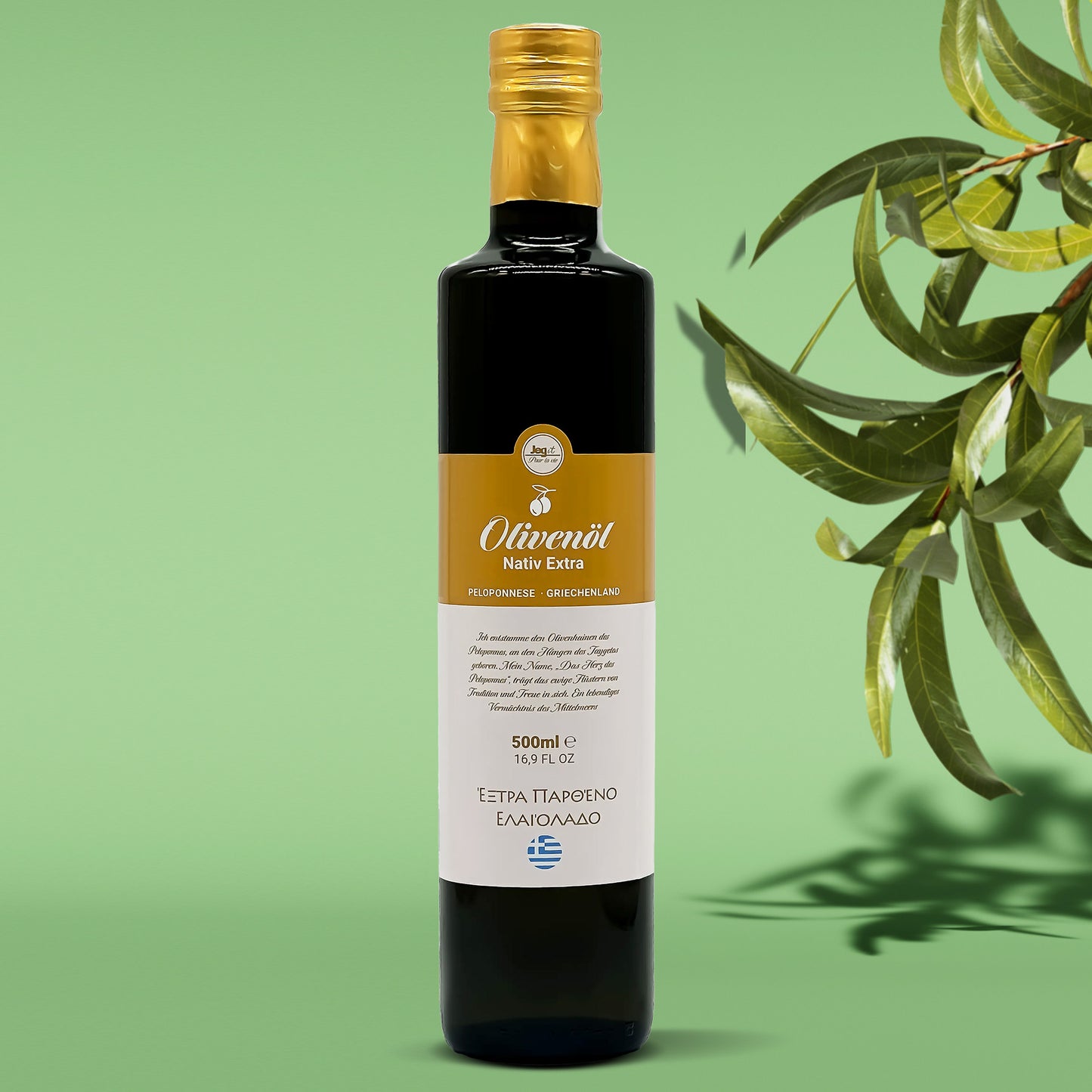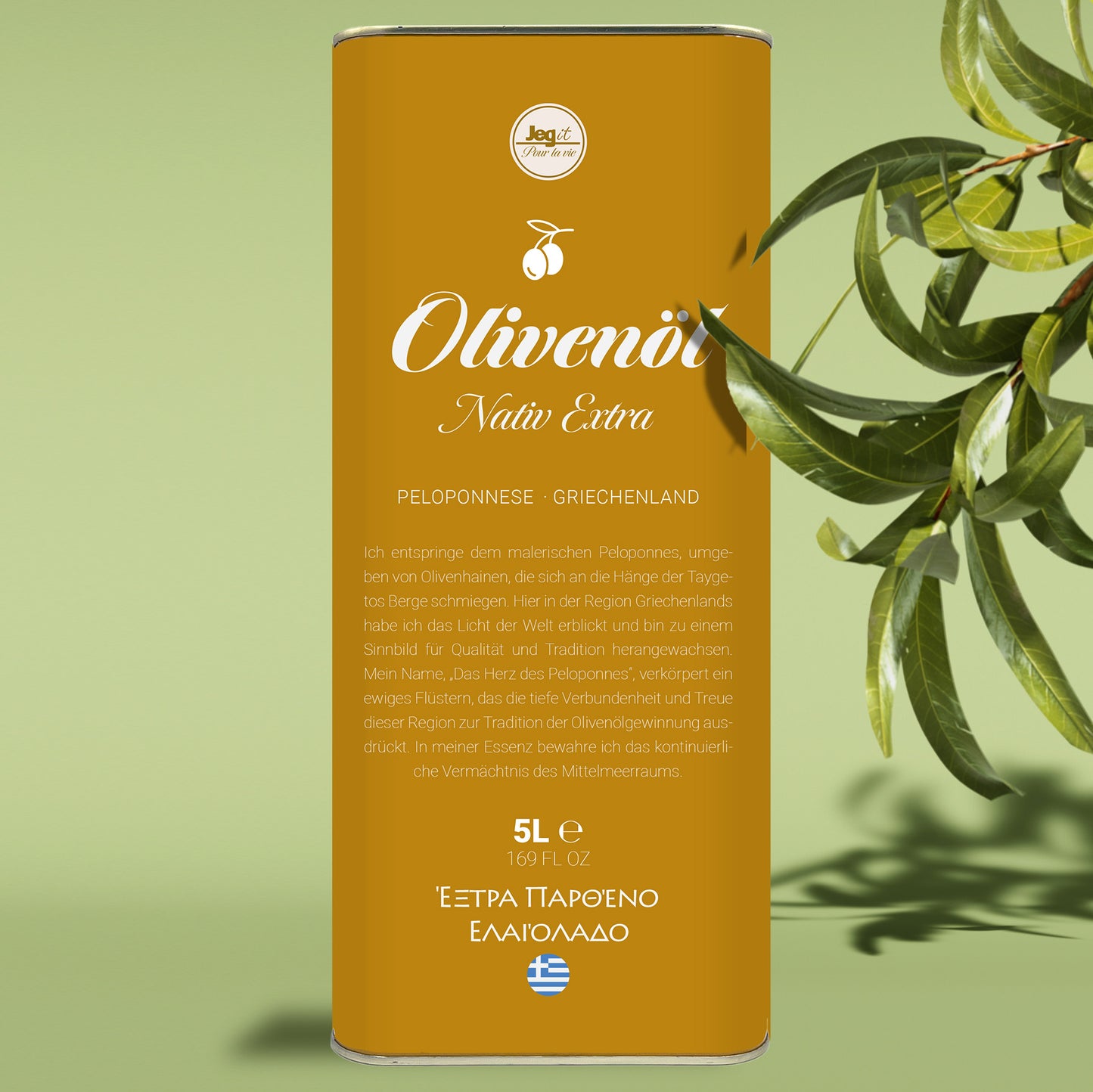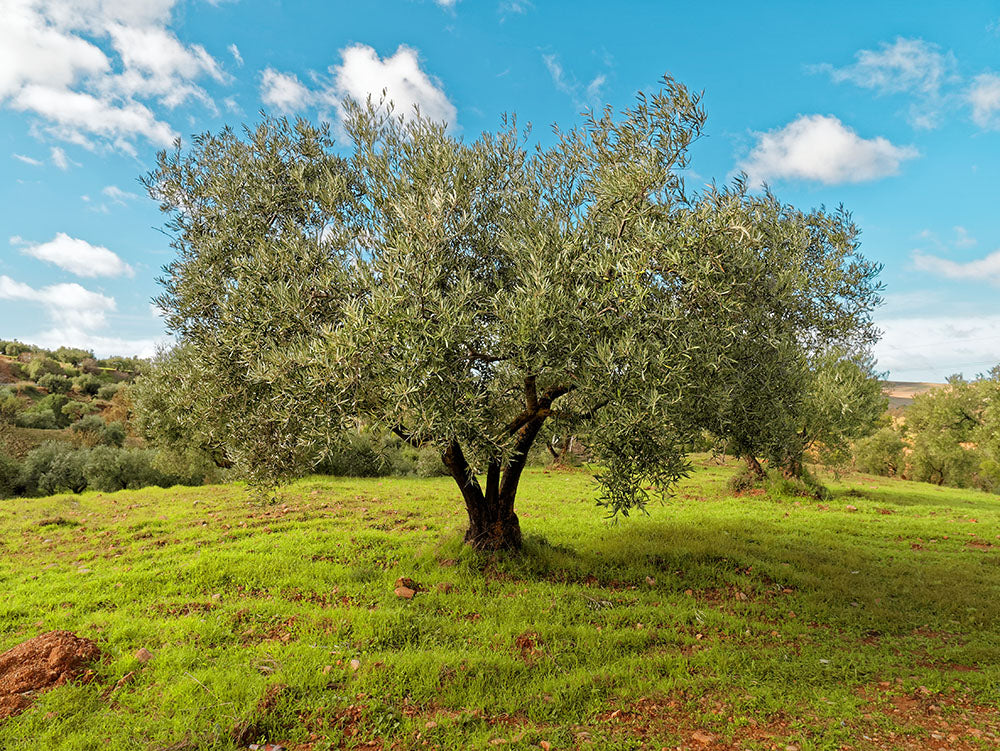
Our Olive Oil from the Peloponnese: An Insight into the Outstanding Quality Features
Share
Our olive oil from the Peloponnese, a product of invaluable worth and quality, is the result of combining traditional cultivation methods with the most advanced technological processes. The recent chemical analyses of this olive oil have delivered impressive results that highlight not only its purity and quality but also the health benefits of this liquid gold. Let us delve deeper into the significance of each measurement and reveal why our olive oil is in a class of its own.

Acidity: 0.26%
Acidity is a fundamental indicator of the quality of olive oil. A low value like 0.26% indicates that the oil was made from fresh olives and is free from oxidation. This low acidity promises an oil of excellent taste and long shelf life, making it ideal for fine cuisine.
UV Absorbance: K270: 0.140, K232: 1.680, ΔΚ: 0.002
K270 and K232 are measures for UV absorption, indicating oxidation and possible impurities in the oil. A K270 value of 0.140 and a K232 value of 1.680 are excellent, as they represent low values, indicating an oil of high purity and minimal oxidation.
ΔK measures the freshness of the olive oil; a value of 0.002 is exceptionally good and proves that the oil is fresh and has been stored under ideal conditions.
Total phenolic compounds: 285 mg/kg
Phenolic compounds are known for their health-promoting properties, including their antioxidant effect. A value of 285 mg/kg is outstanding and shows that our olive oil is rich in these valuable substances, making it a strong ally for health.
Hydroxytyrosol: 18.3 mg/kg and Tyrosol: 18.8 mg/kg
These two compounds are specific types of phenols, especially valued for their positive effects on the cardiovascular system. Their high concentrations in our olive oil support the antioxidant capacity and provide protection against chronic diseases.
Vanillic acid (0.5 mg/kg), Vanillin (0.2 mg/kg), p-Coumaric acid (0.2 mg/kg), and others
These specific phenolic compounds additionally contribute to the antioxidant and health benefits. They enhance the aroma and taste of the olive oil, making it a unique sensory experience.
Pinoresinol (1.0 mg/kg) and Luteolin (72.7 mg/kg)
Pinoresinol is among the lignans, associated with a reduced risk for certain diseases. Luteolin, a flavonoid, is known for its anti-inflammatory properties and its contribution to the prevention of heart diseases and cancer.
Cinnamic Acid: 34.7 mg/kg
Cinnamic acid is a phenolic compound known for its antioxidant, antibacterial, and anti-inflammatory properties. Cinnamic acid in olive oil, like other phenolic compounds, plays a vital role in the health benefits and sensorial properties of the oil. Although cinnamic acid occurs naturally in various plants and is often associated with cinnamon, its presence in olive oil can be attributed to the complex composition and biochemical reactions that occur during the growth of the olives and the oil production process. A high content of 34.7 mg/kg in our olive oil suggests that it can provide strong protection against oxidative damage and inflammatory processes in the body. Cinnamic acid also plays a role in the prevention of chronic diseases, including type 2 diabetes and heart diseases.
1-Acetoxypinoresinol: 0.97 mg/kg
1-Acetoxypinoresinol is a lignan found in olive oil and belongs to the category of polyphenols. Lignans are known for their cancer-preventive properties, particularly in relation to breast and colon cancer. A value of 0.97 mg/kg shows that our olive oil is a useful source of this health-promoting compound.
Luteolin: 72.7 mg/kg
Luteolin, a potent antioxidant, has already been mentioned and deserves additional attention for its impressive concentration of 72.7 mg/kg. This flavonoid compound has various health benefits, including anti-inflammatory and cancer-preventive effects. Luteolin may also have neuroprotective effects and contribute to the prevention of age-related diseases.
AOAc (Isomer of Oleuropein Aglycon): 0.17 mg/kg
AOAc is an isomer of oleuropein aglycon, another phenolic compound found in olive oil. It is known for its antioxidant properties and contributes to the overall antioxidant capacity of the oil. Although present in smaller concentrations, it plays a significant role in promoting heart health and reducing the risk for certain chronic diseases.
Apigenin: 53.5 mg/kg
Apigenin is another flavonoid, valued for its anti-inflammatory and cancer-preventive properties. A concentration of 53.5 mg/kg in our olive oil underlines its potential to contribute to the prevention of cancer and other inflammatory conditions. Apigenin can also have a calming effect and improve sleep quality.
AOLd: 4.9 mg/kg
AOLd is a specific compound found in olive oil and belongs to the phenolic compounds. It contributes to the antioxidant activity of olive oil and supports the health benefits associated with a high content of phenols, such as improving heart health and reducing the risk for chronic diseases.
